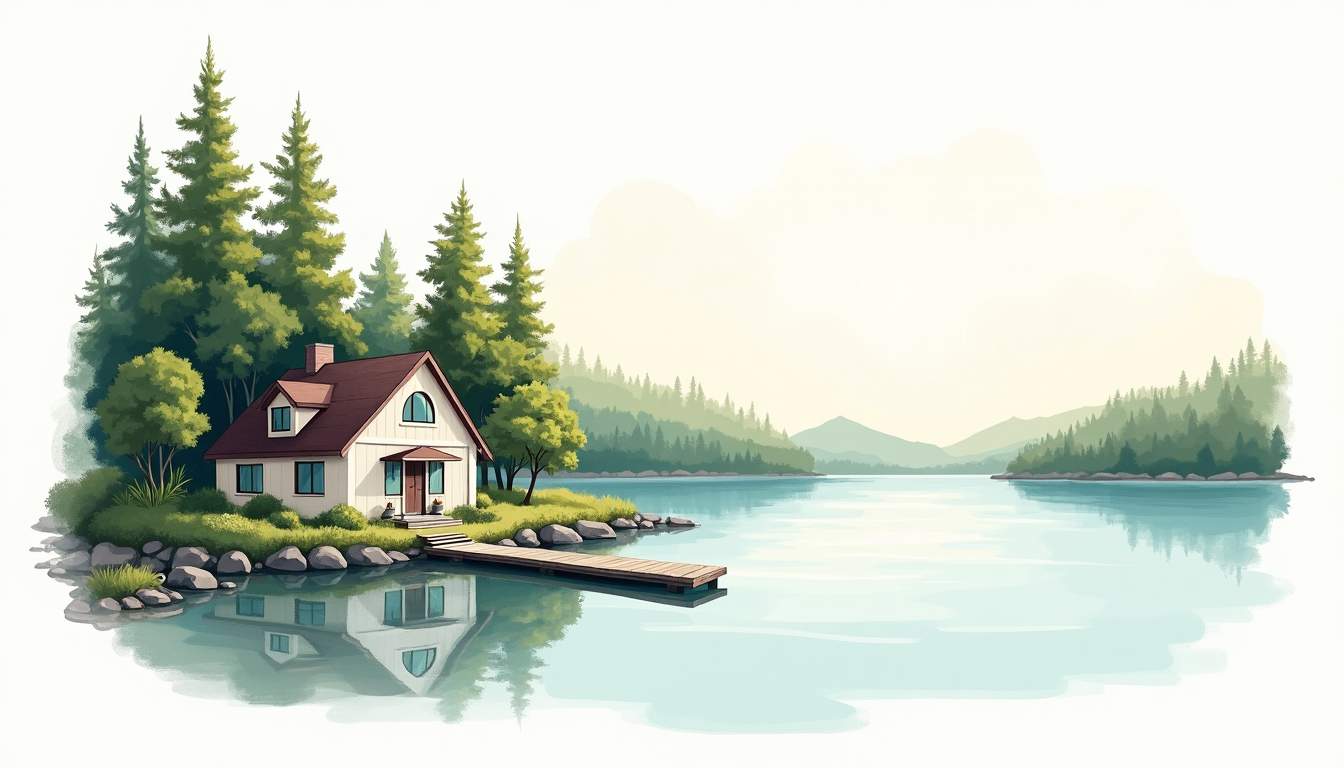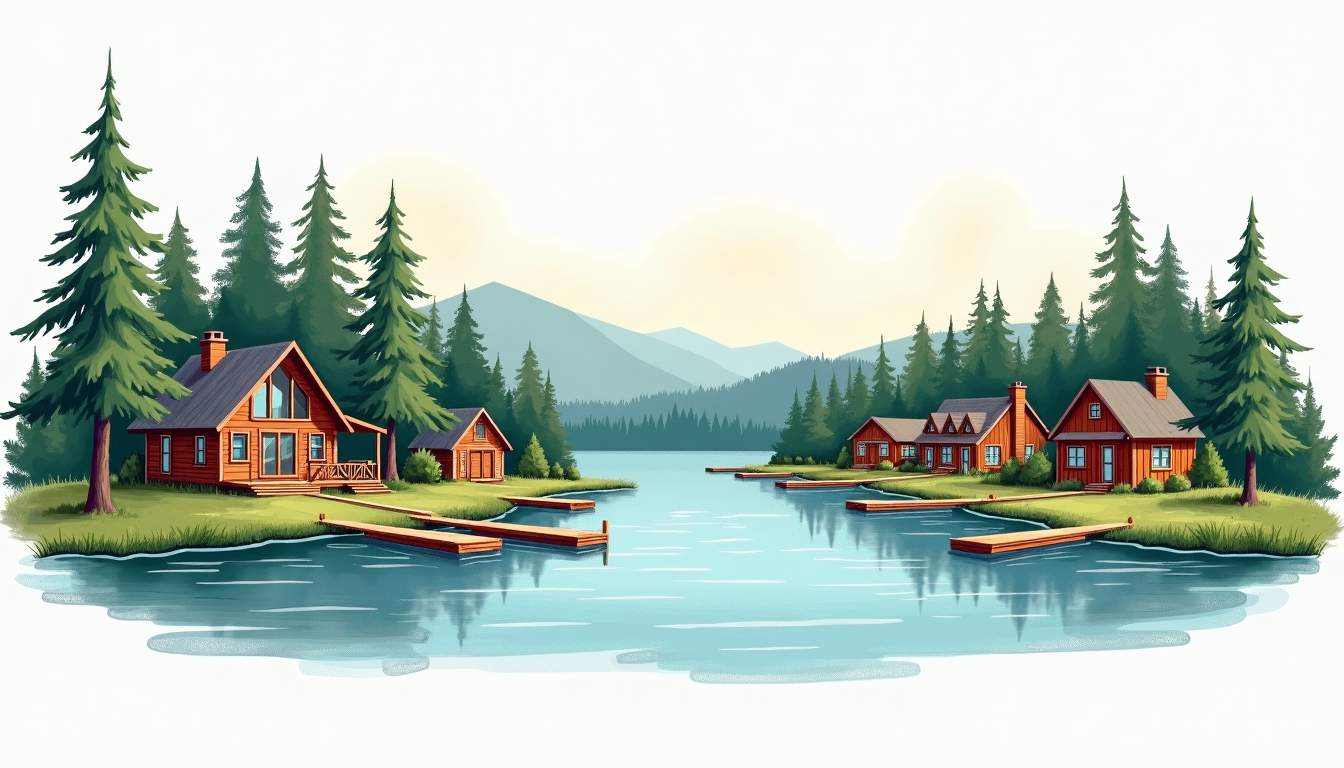
Waterfront living often conjures images of expensive docks and exclusive communities, but affordable lake properties exist in plenty of places. With careful research, realistic expectations, and a flexible approach, lakefront or near-lake homes can be found without breaking the bank. This article explores strategies to locate budget-friendly lake homes, what to expect in terms of maintenance and costs, smart financing options, and lifestyle considerations that help buyers make a confident choice.
Owning a lake property delivers tangible lifestyle benefits: access to water recreation, scenic views, and a calming environment. For many, these perks contribute to improved mental health, increased activity, and the satisfaction of a personal retreat. Choosing an affordable option makes these advantages accessible without the long-term financial strain associated with high-end waterfront estates.
Budget-friendly lake properties also offer potential for value appreciation. Lakeside communities can grow in popularity, leading to steady demand. For buyers who plan to use the property as a second home or a rental, an affordable entry point leaves room to improve the property gradually or adapt it for rental income.
Additionally, more affordable lake properties often provide a more close-knit community atmosphere. Unlike sprawling luxury estates, these neighborhoods tend to foster greater interaction among residents, promoting a welcoming and friendly environment. This sense of community can enhance the overall living experience, providing opportunities for social activities such as group fishing trips, community barbecues, and local events centered around the lake.
Furthermore, budget lake properties typically come with lower maintenance costs and property taxes, which can be a significant consideration for those watching their expenses. Many affordable lakeside homes are simpler in design, which not only makes upkeep easier but also allows buyers to personalize and renovate the space according to their tastes and needs over time. This flexibility is especially appealing to first-time lake property owners who want to customize their retreat without the immediate burden of extensive renovations or high fees.
Small cabins and cottages are classic budget options. These structures often require less initial investment, and their modest size keeps heating, cooling, and upkeep costs lower. Many cabins are located on smaller lots or slightly set back from the water, delivering a balance between access and price.

In addition to their affordability, small cabins frequently embody a cozy, rustic charm that appeals to buyers looking for a peaceful retreat. Many communities around lakes offer these types of homes in settings surrounded by nature trails and local wildlife, enhancing the opportunity for outdoor activities such as fishing, kayaking, and bird watching. Furthermore, these properties often benefit from being part of established neighborhoods, providing access to shared amenities like docks and picnic areas without the burden of high association fees.
Fixer-uppers near lakes can represent significant savings for buyers willing to invest time and effort. Cosmetic upgrades, mechanical improvements, and landscaping can be tackled incrementally, allowing buyers to spread renovation costs over time. This approach often allows customization that matches personal taste while still achieving lakefront living.
These properties frequently come with unique architectural features or designs that can be restored or modernized, preserving the character of the area while improving livability. Additionally, buyers may find that local contractors and craftsmen are familiar with the materials and styles typical to lakefront homes, making renovations smoother and more cost-effective. Another advantage is the potential for increased equity as improvements are made, turning a modest initial purchase into a valuable asset.
Purchasing a lot rather than a finished home can be an economically savvy choice. Raw land prices near smaller or less-developed lakes tend to be lower. Building incrementally or utilizing modular and prefab homes can keep construction costs manageable. Lot purchases also offer long-term flexibility; even if building doesn't happen immediately, owning the land secures future waterfront access.
When considering vacant land, buyers should evaluate factors such as zoning regulations, access to utilities, and the availability of permits, all of which impact development potential and costs. Many affordable lakefront lots are found in up-and-coming areas, offering potential for appreciation as infrastructure and community amenities expand. Furthermore, some lake districts permit unique building options, such as tiny homes or eco-friendly designs, which can align with sustainable living goals while remaining budget-friendly. Careful site selection can maximize privacy and views, enhancing the enjoyment and value of the eventual home.
Lakes in less-touristed areas often have more affordable properties. Avoiding hotspots and well-known vacation markets leads to lower demand and thus lower prices. Regional lifestyle factors—such as job markets, climate, and local amenities—should be considered, but for those prioritizing cost, slight trade-offs in convenience can yield substantial savings.
Smaller lakes and man-made reservoirs frequently offer lower price points than major recreational lakes. These bodies of water still support boating, fishing, and swimming, but with fewer crowds and often lower property taxes. Proximity to larger towns or highways can retain convenience while keeping costs down.
Properties that have gone through foreclosure, auctions, or bank repossession can sometimes be acquired at a discount. These opportunities require careful due diligence: liens, title issues, and necessary repairs should be thoroughly investigated. Working with a realtor experienced in distressed properties and a real estate attorney is strongly recommended.
Waterfront properties usually require specialized insurance, and those in flood-prone zones may need flood insurance in addition to standard homeowner's coverage. Research flood maps and historical water levels, and obtain quotes from multiple insurers. Insurance can vary widely based on elevation, shoreline erosion risk, and local regulations.

Rural lake properties often rely on septic systems and wells. Septic repairs or replacements can be expensive, and wells may require testing and potential refurbishment. Assess the condition of these systems before purchase and budget accordingly. Utility access—electricity, internet, and propane—also affects both comfort and costs.
Ownership can include responsibility for shoreline maintenance, erosion control, and dock installation or repair. Permit requirements vary by state and local jurisdiction; familiarity with local rules is crucial. Some communities restrict certain shoreline treatments to protect ecosystems, which could impact renovation plans and cost estimates.
Conventional mortgages are suitable for habitable, permanent residences that conform to lender standards. For older homes or unique properties, FHA loans, VA loans (for qualified veterans), or renovation-specific loans like the FHA 203(k) can be good alternatives. These programs allow financing for repairs and improvements as part of the purchase.
When buying a lot or planning new construction, construction loans or owner-builder loans can fund construction phases. These loans often require larger down payments and a well-documented construction plan. Some buyers combine small personal loans, savings, and phased building to avoid large upfront financing costs.
Shared ownership arrangements, co-buying with family or friends, or partnering with investors can lower individual financial burdens. Clear agreements about usage, maintenance responsibilities, and exit strategies are necessary to prevent disputes. Rental income from short-term vacation stays can also offset mortgage payments if local regulations permit.
When renovating on a budget, prioritize roof, foundation, electrical, plumbing, and HVAC systems. Addressing these essentials ensures safety and avoids costly emergency repairs later. Cosmetic upgrades can wait, and DIY-friendly projects can be phased in as time and budget allow.
Investing in insulation, efficient windows, and durable exterior materials reduces long-term costs. Composite decking, metal roofing, and low-maintenance siding keep upkeep low, which is especially valuable for seasonal properties. Energy-efficient appliances and smart thermostats can also reduce utility bills.
Landscape choices should balance aesthetics, erosion control, and maintenance. Native plants reduce watering needs and support local ecosystems, while strategic pathways and defined access points to the water limit wear and erosion. Simple hardscaping, like gravel paths and native stone, can be attractive and long-lasting without large expenses.
Decide whether the property will be year-round, seasonal, or occasional use. Seasonal properties may accept limited winterization measures to save money, while year-round occupancy requires more robust insulation and heating. Understanding intended usage helps prioritize investments and ongoing costs.
Engaging with local community groups, lake associations, and volunteer services can provide support and shared resources. Lake associations often coordinate shoreline clean-ups, sponsor social events, and advocate for water quality—contributing to a better living experience without large personal cost.
When regulations allow, renting the property during peak seasons can offset mortgage and maintenance expenses. Photos and honest descriptions of a modest, clean lakeside experience attract renters seeking affordable getaways. Short-term rentals require planning for cleaning, insurance, and local tax rules, but can be a meaningful income stream.
Algae blooms, invasive species, and runoff pollution can affect water quality and property enjoyment. Research historical water quality reports and talk to locals about seasonal patterns. Awareness of potential issues helps avoid unpleasant surprises after purchase.
Properties on steep slopes or unstable shorelines can require expensive stabilization work. Look for signs of recent slumping, exposed tree roots, or patchwork repairs. Professional geotechnical or shoreline assessments may be warranted for properties with visible issues.
Homeowner association rules, easements, or lake management policies can limit dock construction, boat size, or property modifications. Review covenants and local zoning rules carefully to ensure the intended use—whether for boats, rentals, or expansions—aligns with permitted activities.
Affordable lake property homes are achievable with informed decision-making, a realistic view of costs, and flexibility in location and property type. Whether choosing a small cabin, a fixer-upper, or a lot to build on later, each path has trade-offs and rewards. Prioritizing essential systems, understanding ongoing expenses like insurance and shoreline maintenance, and exploring creative financing options help make waterfront living attainable without sacrificing financial security.

With patience and prudent planning, owning a lake property can become a gateway to a more relaxed, active lifestyle—one that blends nature, recreation, and the comfort of home without an overwhelming price tag.
Ready to embrace budget-friendly lakefront living without compromising on luxury and amenities? Tennessee National offers an exceptional blend of comfortable homes and premier resort-style community features, including a Greg Norman Signature Golf Course, private marina, and waterfront dining. Whether you prefer a move-in ready home or a custom build, our gated community in scenic Tennessee delivers a lifestyle designed to fit your desires. Schedule a Private Tour today and start turning your affordable lake property dreams into reality.